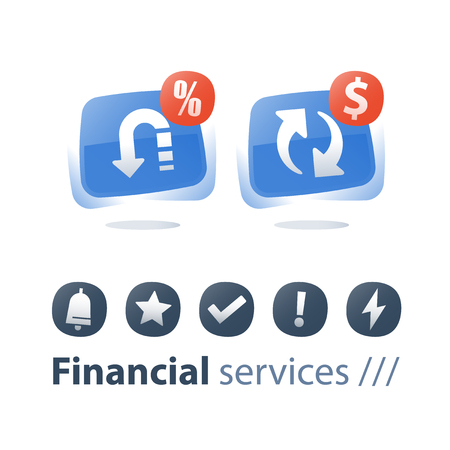1. Overview of Federal and Private Student Loans
When it comes to paying for college in the United States, most students and families look at two main types of student loans: federal and private. Each comes with its own rules, benefits, and challenges. Understanding the basics can help you make smart decisions about borrowing for your education.
What Are Federal Student Loans?
Federal student loans are funded by the U.S. government. These loans are designed to help students cover the cost of higher education at accredited colleges, universities, and trade schools. The process for getting a federal loan starts with filling out the Free Application for Federal Student Aid (FAFSA).
Key Features of Federal Student Loans
- Source: U.S. Department of Education
- Accessibility: Available to most students who complete the FAFSA, regardless of credit history or income (with some exceptions for Parent PLUS loans)
- Borrowing Terms: Fixed interest rates, flexible repayment options, potential for loan forgiveness programs
What Are Private Student Loans?
Private student loans come from non-government sources like banks, credit unions, or online lenders. These are usually used to fill in gaps when federal aid and other resources aren’t enough to cover all college costs.
Key Features of Private Student Loans
- Source: Private financial institutions (banks, credit unions, state-based agencies)
- Accessibility: Depends on credit score, income, and sometimes requires a co-signer
- Borrowing Terms: Variable or fixed interest rates (often based on creditworthiness), fewer flexible repayment options compared to federal loans
Federal vs. Private Student Loans at a Glance
| Federal Student Loans | Private Student Loans | |
|---|---|---|
| Source | U.S. Government | Banks & Lenders |
| How to Apply | FAFSA form | Lender’s application process (credit check required) |
| Interest Rates | Fixed (set by Congress) | Variable or Fixed (based on credit) |
| Repayment Flexibility | Multiple plans, including income-driven options | Limited flexibility, set by lender |
| Loan Forgiveness Programs | Yes (e.g., Public Service Loan Forgiveness) | No standard forgiveness programs |
| Credit Check Required? | No (except Parent PLUS loans) | Yes (usually with co-signer for students) |
This overview shows the main differences between federal and private student loans in terms of where they come from, how easy they are to get, and what kind of borrowing terms you can expect.
2. Key Differences in Repayment Options
Federal Student Loan Repayment Structures
Federal student loans offer a variety of repayment plans, many of which are designed to be flexible and supportive for borrowers facing different financial situations. Here are the main options:
| Repayment Plan | Description | Eligibility |
|---|---|---|
| Standard Repayment Plan | Fixed monthly payments for up to 10 years. | All federal loan borrowers. |
| Graduated Repayment Plan | Payments start low and increase every two years, up to 10 years. | All federal loan borrowers. |
| Income-Driven Repayment (IDR) Plans | Monthly payments set as a percentage of your discretionary income; terms range from 20–25 years, with possible loan forgiveness at the end. | Borrows with Direct Loans, some plans require specific loan types. |
| Extended Repayment Plan | Up to 25 years to repay with fixed or graduated payments. | Borrows with more than $30,000 in outstanding Direct Loans. |
| Public Service Loan Forgiveness (PSLF) | Forgives remaining balance after 120 qualifying payments while working full-time for a qualifying employer (like government or nonprofit). | Borrows with Direct Loans who work in public service. |
Private Student Loan Repayment Structures
Private lenders have their own rules and tend to offer less flexibility compared to federal loans. Repayment options vary by lender, but generally include:
| Repayment Option | Description | Main Features |
|---|---|---|
| Immediate Repayment | You start making full principal and interest payments right after the loan is disbursed. | No delay; higher monthly payments but less interest overall. |
| Interest-Only Repayment | You pay just the interest while in school, then start paying principal and interest after graduation. | Lowers initial payments but total cost may be higher over time. |
| Deferred Repayment | No payments while in school; principal and interest accrue, then full payments begin after graduation. | No upfront payment but can lead to higher total cost due to accruing interest. |
| Custom Plans (varies by lender) | A few lenders may offer extended or graduated plans similar to federal options, but these are not guaranteed and often come with stricter eligibility requirements. | Limited availability; depends on creditworthiness and lender policies. |
Main Differences at a Glance
| Federal Loans | Private Loans | |
|---|---|---|
| Income-Based Plans Available? | Yes (multiple IDR plans) | No (rarely offered) |
| Loan Forgiveness Programs? | Yes (e.g., PSLF) | No (almost never offered) |
| Flexibility During Hardship? | Deferment, forbearance, flexible plans available | Lender-specific, usually less flexible and harder to qualify for assistance programs |
The Bottom Line on Repayment Flexibility
If you anticipate needing help managing your payments or want access to options like income-driven repayment and potential loan forgiveness, federal student loans provide far more safety nets than most private loans. Private loans can be useful in certain cases but usually require more financial stability and offer fewer protections if you hit tough times financially.

3. Interest Rates and Borrower Protections
When choosing between federal and private student loans, understanding how interest rates are set and what borrower protections are available is essential. These factors can significantly impact your total repayment amount and the support you receive during financial hardships.
How Interest Rates Are Set
| Loan Type | Interest Rate Type | How Rates Are Determined |
|---|---|---|
| Federal Student Loans | Fixed | Set annually by Congress; all borrowers get the same rate for the year they take out the loan. |
| Private Student Loans | Variable or Fixed | Determined by the lender based on credit score, income, and market conditions; rates can vary widely from person to person. |
Federal loans offer stability with fixed interest rates that remain the same throughout the life of your loan. In contrast, private loans may offer either fixed or variable rates, which means your payments could increase over time if market rates rise.
Borrower Protections: Deferment, Forbearance, and Hardship Options
Borrower protections are another important difference between federal and private student loans. Here’s how each type compares:
| Protection Option | Federal Loans | Private Loans |
|---|---|---|
| Deferment (Postpone Payments) | Available for unemployment, school enrollment, military service, etc.; interest may not accrue on subsidized loans. | Depends on lender; often more limited, and interest usually accrues during deferment. |
| Forbearance (Temporary Payment Relief) | Multiple options available; federal rules apply; interest always accrues. | Lender discretion; options vary widely; interest almost always accrues. |
| Income-Driven Repayment/Hardship Options | Several plans adjust payments based on income and family size; possible loan forgiveness after a set period. | Rarely offered; some lenders have hardship programs but not as generous or flexible as federal plans. |
Federal student loans generally provide much stronger borrower protections. If you face tough times—like losing your job or dealing with a medical emergency—you’ll find more safety nets with federal loans. Private loans, however, depend on the policies of each individual lender, which means protections can be limited or unavailable in some cases.
4. Long-Term Financial Impact
When choosing between federal and private student loans, it’s important to look beyond just the immediate repayment terms. The type of loan you select can have lasting effects on your credit score, overall financial health, and even your future opportunities—like buying a home or going back to school for an advanced degree.
Impact on Credit Score
Your payment history is one of the biggest factors affecting your credit score in the U.S. Federal student loans often offer more flexible repayment options, such as income-driven plans or deferment, making it easier to avoid missed payments or default. Private loans may not be as forgiving; missing a payment can quickly hurt your credit. Here’s a quick comparison:
| Loan Type | Flexibility in Repayment | Impact on Credit if Missed Payment |
|---|---|---|
| Federal Student Loans | High (forbearance, deferment options) | Usually less severe if you use protections |
| Private Student Loans | Low (fewer relief options) | Immediate negative impact on credit |
Overall Financial Health
The total amount you pay over time can differ significantly. Federal loans often have lower interest rates and offer forgiveness programs, which can reduce your long-term debt burden. In contrast, private loans may come with higher fixed or variable rates and rarely offer forgiveness. This means you could end up paying more out-of-pocket over the life of the loan with a private lender.
Long-Term Debt Considerations
- Federal Loans: Potential for loan forgiveness, especially for public service workers.
- Private Loans: Unlikely to be forgiven; higher risk of accumulating interest if payments are missed.
Ability to Achieve Future Goals
Your student loan balance and monthly payment amount can affect your eligibility for other types of credit in the future. For example, when applying for a mortgage, lenders will look at your debt-to-income ratio. High monthly payments from private loans could make it harder to qualify for a home loan or take on new debt for graduate school.
Comparing Future Opportunities
| Pursuing Homeownership | Going to Graduate School | |
|---|---|---|
| Federal Loans | Easier qualification due to flexible repayment and potential forgiveness programs | Simpler process with access to federal aid for grad school |
| Private Loans | Difficult if high payments inflate debt-to-income ratio; less flexibility to adjust payments | No access to federal aid; may need additional private loans at higher rates |
The choice between federal and private student loans goes beyond just monthly payments—it can shape your financial stability and open (or close) doors down the road. Understanding these differences can help you make a smart decision that supports both your present needs and future goals.
5. Choosing the Best Option for Your Situation
Assessing Your Financial Needs
When deciding between federal and private student loans, its important to start by evaluating your financial situation. Think about how much you need to borrow, what other sources of funding are available (like scholarships or family support), and how comfortable you are with taking on debt. Remember, federal loans often have lower interest rates and more flexible repayment options compared to private loans.
Key Factors to Consider
| Factor | Federal Loans | Private Loans |
|---|---|---|
| Interest Rates | Usually fixed, set by the government | May be fixed or variable, set by lender based on credit score |
| Repayment Flexibility | Income-driven plans, deferment, forbearance options available | Limited flexibility; depends on lender’s policies |
| Credit Check Required? | No (except for PLUS loans) | Yes (affects approval and interest rate) |
| Loan Forgiveness Programs | Available (e.g., Public Service Loan Forgiveness) | Not available |
| Cosigner Needed? | No (except for some PLUS loans) | Often required if no credit history or low income |
Thinking About Your Career Path
Your future career can play a big role in which loan is best for you. If you plan to work in public service, teaching, or non-profit sectors, federal loans might offer loan forgiveness programs that could save you thousands of dollars over time. Private loans don’t offer these benefits, so if your career isn’t likely to lead to high earnings right away, federal loans could provide a safer path.
Questions to Ask Yourself
- Will my career qualify me for loan forgiveness?
- How stable will my income be after graduation?
- If I hit hard times financially, will I need flexible repayment options?
- Do I have a strong enough credit history to get a good rate on a private loan?
- Can I afford higher monthly payments if my private loan doesn’t offer flexible plans?
Making an Informed Decision as a Family
Sit down with your family or a trusted advisor to review all your options. Use online calculators to estimate your monthly payments under different scenarios. Consider both short-term needs and long-term impacts—like total interest paid over the life of the loan and how different repayment plans might affect your budget after graduation.
Summary Table: Which Loan Might Be Right For You?
| Your Situation | Recommended Loan Type |
|---|---|
| You want low, fixed interest rates and flexible repayment options. | Federal Loan |
| You have excellent credit or a cosigner and want potentially lower rates. | Private Loan |
| You plan on working in public service or qualifying fields. | Federal Loan (for forgiveness programs) |
| You need to borrow more than federal limits allow. | Private Loan (as supplement) |
The right choice depends on your personal circumstances. Take time to compare offers, read the fine print, and think about where your education—and career—will take you next.


